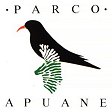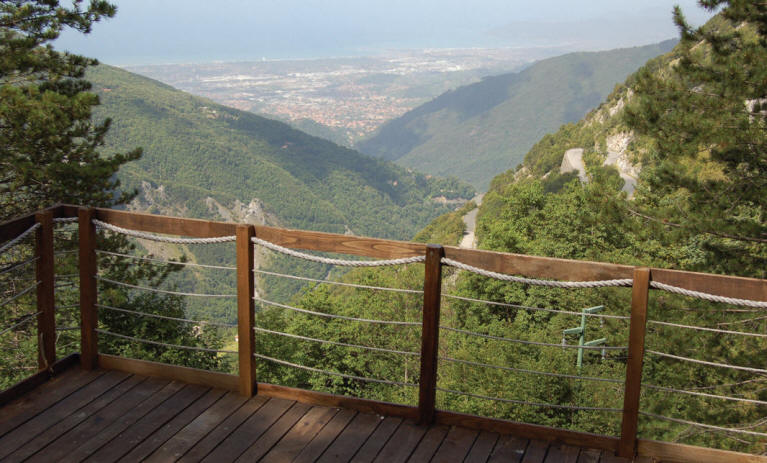|
|
|
|
The Apuan Alps Botanical Garden "P. Pellegrini" |
|
Main projects and actions
Descriptive cards The Park's Herbarium |
The botanic garden was created in
1966 to safeguard and give value to the Apuan Alps. It is dedicated
to Pietro Pellegrini, a doctor and botanist who was born in Carrara
in 1867. He spent most of his life studying the Apuan flora, and
died in Massa in 1957. The Botanic Garden covers an area of more or less 3 hectares. It is located on a rocky peak made of two kinds of rock: porphyritic schists(Permian-Palaeozoic), mainly siliceous, and the so-called “grezzoni”, which are rocks made of dolomite (Triassic-Mesozoic), a calcium and magnesium carbonate. In the lowest area, made of porphyritic schists, there are numerous acidophil plants that on the Apuan Alps usually grow in chestnut woods (Castanea sativa), Among these: Sageleaf rockrose (Cistus salvifolius), Tree heath (Erica arborea), and others (Teucrium scorodonia, Digitalis lutea, Phyteuma orbiculare). Most of the Botanic Garden is made of dolomite. There are European Hop Hornbeams (Ostrya carpinifolia), Turkey Oaks (Quercus cerris), Manna Ashes (Fraxinus ornus) and White Beams (Sorbus aria). In the big plains there are shrubs such as the Wayfaring Tree (Viburnum lantana), Snowy Mespilus (Amelanchier ovalis) and Scorpion Senna (Coronilla emerus). On the calcareous rocks and in the plains there are some endemic species. Many of them exist only on the Apuan Alps (Salix crataegifolia, Santolina leucantha, Polygala carueliana), other plants exist both on the Apuan Alps and Lucca Apennine (Thesium sommieri, Buphthalmum salicifolium subsp. flexile, Carex macrostachys, Moltkia suffruticosa, Rhamnus glaucophyllus, Globularia incanescens, Leontodon anomalus); while some others can be found on most of the Apennine chain (Scabiosa holosericea, Centaurea ambigua subsp. ambigua, Orchis paucifl ora) and on the Mediterranean basin mountains (Astragalus purpureus subsp. gremlii, Hypericum coris, Helianthemum oelandicum subsp. italicum).In a very little area of the Botanic Garden it is
possible to find the Blueberry (Vaccinium myrtillus),
which represents a kind of vegetation that lives on the highest
siliceous mountains of the Apuan Alps. Situated in Pian della Fioba, at more or less 900
metres of altitude, the Botanic Garden “P. Pellegrini” can be
reached from Massa with the panoramic street Massa-San Carlo
Terme-Antona-Arni (km 18), or, always from Massa, taking the “via
dei marmi” (“marble street”) which at the beginning coasts the
Frigido river and then starts a steep rise, turning right, in the
direction of Altagnana. The Botanic Garden is open during the summer (May - September)
FOR MORE INFORMATION VISIT THE BOTANICAL GARDEN'S WEBSITE (italian)
|
|
|
|||||||||
|
apuaneweb.it
|
archeominerario.it |
apuanegeopark.it |
apuaneducazione.it |
actapuana.it
|
|||||
|
parcapuane.toscana.it |
antrocorchia.it
|
orto botanico
|
apuaneturismo.it
|
amormarmoris.it |
|||||
|
|
|||||||||


